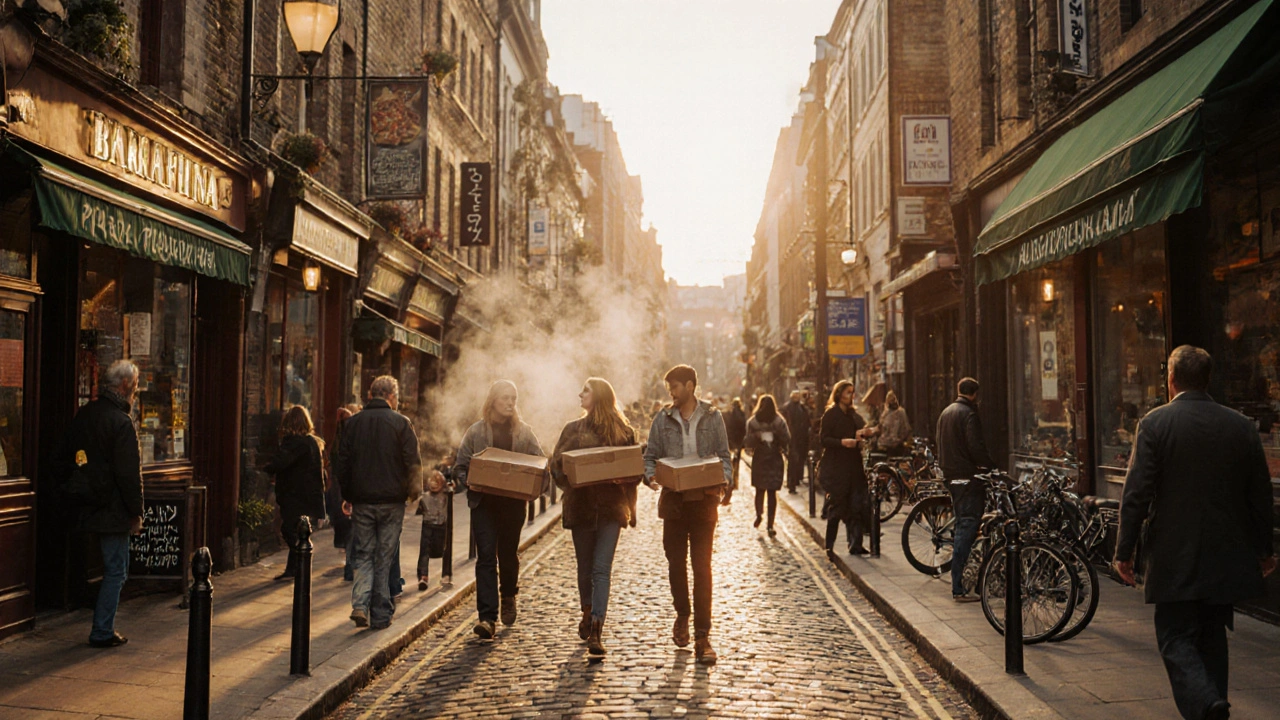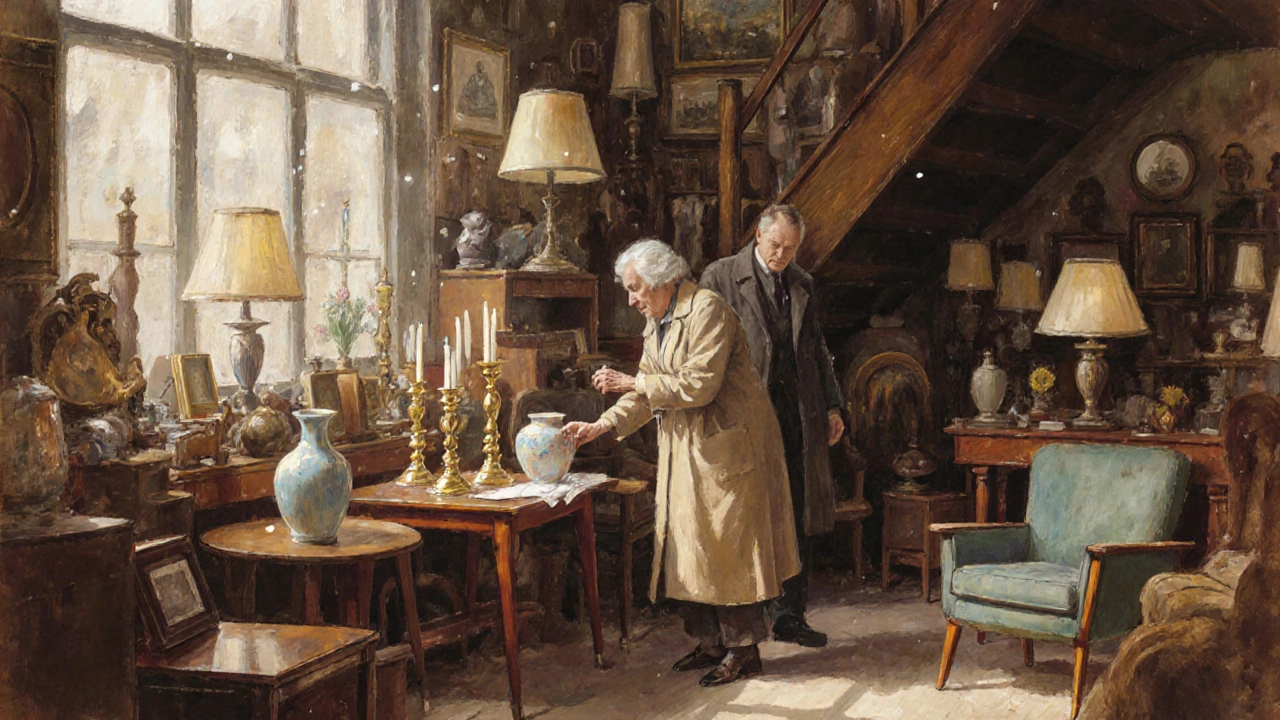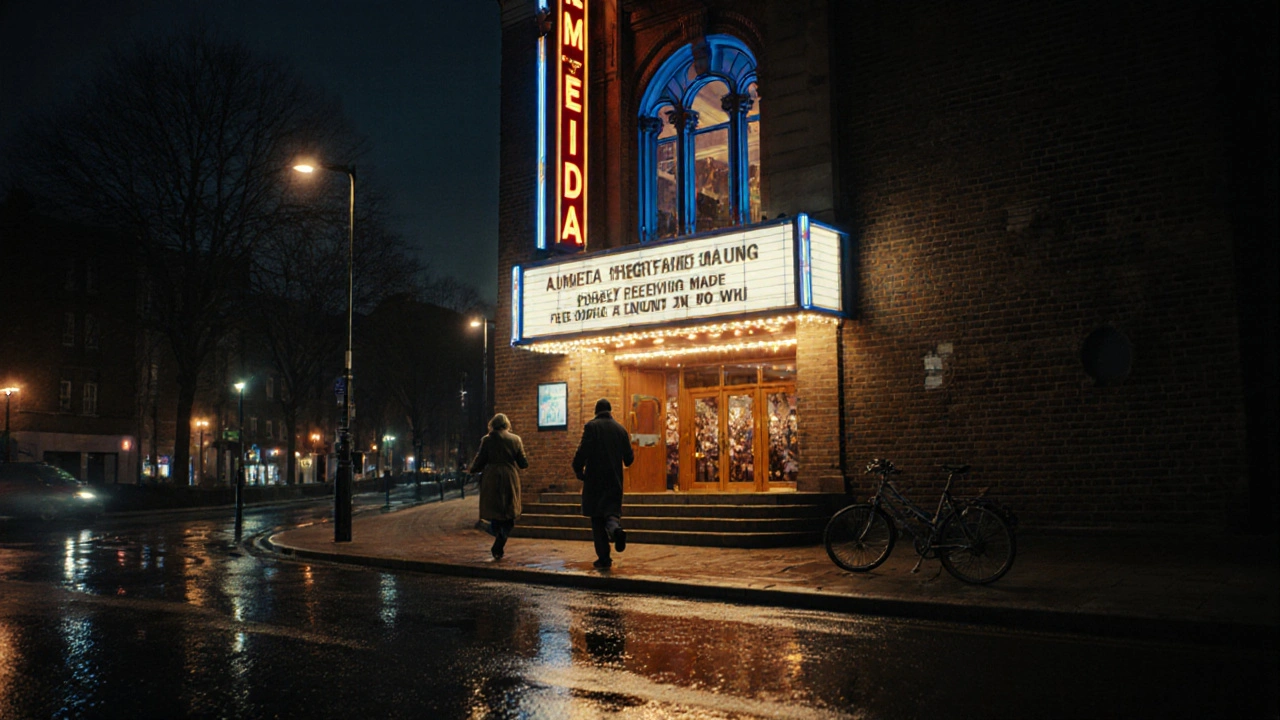
Upper Street in Islington isn’t just a road-it’s the beating heart of North London’s most lively neighborhood. Walk down it on a Friday evening and you’ll see couples in jeans heading to gastropubs, families grabbing takeaway dumplings, theatre-goers checking their tickets, and locals chatting outside independent boutiques. It’s not touristy in the way Covent Garden is. It’s lived-in, real, and packed with character.
Where to Eat: From Michelin Stars to Perfect Pizzas
Upper Street’s food scene doesn’t play it safe. You’ll find everything from a £12 bowl of ramen that locals swear by to restaurants that have earned Michelin recognition. Barrafina, the Spanish tapas chain started by Sam and Eddie Hart, opened its first branch here in 2007 and still draws queues. Their grilled octopus and patatas bravas are simple, fresh, and perfectly executed. Don’t wait for a table-head to the counter, grab a stool, and watch the chefs work.
For something more casual, Alimentum has been a neighborhood staple since 1999. It’s not flashy, but the tasting menu changes weekly based on what’s in season. One regular told me they’ve eaten here every month for 15 years-never once been disappointed.
If you’re craving pizza, Pizza Pilgrims on Upper Street serves Neapolitan-style pies with a thin, charred crust and San Marzano tomatoes. Their ‘Margherita’ is the best in North London, and their ‘Nduja’ with spicy salami and honey is a secret weapon for date nights. Lines form before 7pm, but the wait is worth it.
And don’t skip the dessert spots. St. John Bread and Wine has a sticky toffee pudding that’s rich enough to make you forget you’re on a diet. Meanwhile, Choccywoccydoodah is a candy-colored wonderland of cakes, macarons, and chocolate sculptures. It’s Instagram-famous, but the lemon drizzle cake? Actually good.
Shopping: Independent Boutiques and Hidden Gems
Forget chain stores. Upper Street’s retail magic is in its independents. You’ll find a mix of vintage, design-led labels, and niche beauty shops that you won’t see anywhere else in London.
Liberty London has a smaller outpost here, but the real gems are tucked away. Islington Antiques Centre is a three-floor maze of 1920s lamps, brass candlesticks, and mid-century chairs. One regular found a 1950s Danish teak dining table for £180-now it’s the centerpiece of her kitchen.
St. John (yes, the same name as the restaurant) is a minimalist fashion brand that makes wool coats and cashmere sweaters that last decades. Their Islington store is quiet, uncluttered, and feels more like a private club than a shop. A wool coat here costs £500, but it’s the only one you’ll ever need.
For beauty lovers, Flora & Fauna sells natural skincare with ingredients you can pronounce. Their lavender and chamomile face oil is a cult favorite. And if you need a new pair of shoes, Shoebox carries British-made brands like Tricker’s and Grenson. Staff here know their leather grades like they know their neighbors.
There’s also a weekly farmers’ market on Saturdays at Islington Green. Local cheese, sourdough bread, honey from Hertfordshire bees-it’s the kind of place where you end up buying more than you planned.

Theatres: From West End Quality to Off-West End Gems
Islington’s theatre scene punches above its weight. The Almeida Theatre is the crown jewel. It’s hosted early runs of plays that later went to the West End, including the original production of Angels in America. Tickets are cheaper than in central London, and the seating is intimate-you feel like you’re part of the story.
Down the street, Gate Theatre specializes in bold, experimental work. Last year, they staged a one-woman play about a Syrian refugee that sold out for six months. The space is small, the lighting is moody, and the performances are raw. You leave thinking differently about the world.
For musicals and family-friendly shows, Islington’s Union Theatre offers affordable tickets and a cozy vibe. They’ve revived forgotten 1980s musicals and turned them into cult hits. One audience member told me they’ve seen Chess there three times-and each time, the cast was different, but the magic stayed the same.
Even the smaller venues matter. Barbican Cinema (just off Upper Street) screens indie films and classic British cinema. No popcorn machines, no ads-just a screen, a good seat, and silence before the lights go down.
Why Upper Street Feels Different
What makes Upper Street work isn’t just the restaurants or shops or theatres. It’s the rhythm. The same people who eat at Barrafina at 7pm are the ones buying flowers from the stall on the corner at 10am. The barista who knows your order is the same one who used to work at the Royal Opera House. It’s a neighborhood that doesn’t need to advertise-it just works.
Compare it to Soho or Camden. Those places feel like they’re trying too hard. Upper Street doesn’t care. It’s confident. It’s lived in. It’s not trying to be the next Shoreditch. It’s just Islington.
There’s no grand plan here. No corporate rebranding. No chains pushing out the locals. The independent bookshop on the corner? Still there. The family-run Turkish deli? Still open at 10pm. The pub with the red awning that’s been serving pints since 1982? Still has the same landlord.

What to Do in One Day
- Start with coffee at Bar Italia-yes, the same one from the 1950s. Order an espresso and a cornetto.
- Walk to Islington Green and browse the Saturday market.
- Lunch at Pizza Pilgrims or Alimentum if you’re feeling fancy.
- Spend an hour in Islington Antiques Centre-you’ll find something unexpected.
- Grab a book at Islington Bookshop, then a glass of wine at The Princess, a 19th-century pub with a hidden garden.
- Dinner at Barrafina or St. John Bread and Wine.
- End the night with a play at the Almeida or a film at the Barbican Cinema.
When to Visit
Weekends are lively, but weekdays are where you’ll feel like a local. Tuesday nights at the Almeida are often cheaper. Thursday evenings, the theatres have half-price tickets. The market is best on Saturday mornings before 11am-after that, it’s crowded.
Summer evenings are magic. The street lights come on, the outdoor seating fills up, and you hear snippets of conversations in five different languages. That’s when you realize Upper Street isn’t just a place to visit. It’s a place to belong.
Is Upper Street in Islington safe at night?
Yes, Upper Street is one of the safest areas in North London at night. It’s well-lit, busy, and patrolled by local police. The theatres and restaurants stay open late, and there’s always a crowd. Stick to the main street-side alleys are quiet but not dangerous. Just use common sense, like you would anywhere in London.
Can I get to Upper Street by public transport?
Absolutely. The nearest Tube station is Angel on the Northern Line-just a 5-minute walk. Buses 19, 30, 73, 271, and 390 all stop on Upper Street. If you’re coming from King’s Cross or Camden, it’s a short 10-15 minute ride. Parking is tight, so public transport is the easiest option.
Is Upper Street expensive?
It can be, but it doesn’t have to be. A coffee costs £3.50, a sandwich £10, and a theatre ticket can be as low as £15 on off-nights. You can eat well for £20-£25 at Pizza Pilgrims or Alimentum’s lunch menu. The high-end spots exist, but so do the budget-friendly ones. It’s about choosing where you spend.
Are there family-friendly options on Upper Street?
Yes. The Islington Bookshop has kids’ story hours every Wednesday. Pizza Pilgrims and Barrafina have high chairs and simple menus. The Union Theatre often stages family-friendly shows during school holidays. And the park at Islington Green is perfect for letting kids run around before dinner.
What’s the best time to visit Upper Street?
Late afternoon to early evening-between 4pm and 8pm-is ideal. The light is golden, the street is buzzing, and you can catch the transition from shopping to dinner. Weekdays are quieter, weekends are livelier. If you want to avoid crowds, go on a Tuesday or Wednesday.